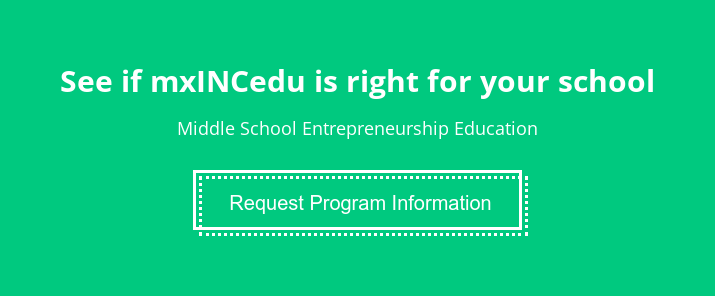.jpg?width=180&name=UNCHARTERED%20LEARNING%202021%20(12%20of%2015).jpg) I thought about starting this blog like so many blogs written over the last few years. In these unprecedented times… After two of the longest years of our lives… From navigating a global pandemic… but you’ve heard all that.
I thought about starting this blog like so many blogs written over the last few years. In these unprecedented times… After two of the longest years of our lives… From navigating a global pandemic… but you’ve heard all that.
 Despite the challenges schools face today, there is always an opportunity to focus on the now, and engage students and teachers more deeply, and bring joy back to the classroom. In fact, we see evidence of this. I chatted with two teachers who lead the middle school entrepreneurship program, mxINCedu, at their schools to share how teaching entrepreneurship to middle schoolers is filling their proverbial buckets and fueling their passion for teaching and learning.
Despite the challenges schools face today, there is always an opportunity to focus on the now, and engage students and teachers more deeply, and bring joy back to the classroom. In fact, we see evidence of this. I chatted with two teachers who lead the middle school entrepreneurship program, mxINCedu, at their schools to share how teaching entrepreneurship to middle schoolers is filling their proverbial buckets and fueling their passion for teaching and learning.
Reflecting on the Shift to Online Learning and the Outcomes
At the start of the pandemic, adapting to online learning presented a challenge for teachers and students everywhere—especially younger students, like middle schoolers. “I felt like students were not getting the attention they deserved,” says middle school teacher Melodi Kunn of Dieterich Middle School, Midlothian ISD. Melodi has been teaching for 14 years, advancing through a series of technology roles within her school district before returning to teach mxINCedu entrepreneurship in middle school. She’ll be the first to tell you she loves new challenges and adventures, but the sudden shift to online learning was challenging, and she immediately recognized how student engagement was going to be an uphill battle.
Denise Andrews of Leroy Greene Academy in the Natomas Unified School District found her solution in the middle school entrepreneurship program, mxINCedu. With five years of experience teaching English, business, and now early entrepreneurship in her district, Denise knows her students well and appreciated the deep connection she established with them in her classroom.
When meeting in person was no longer an option, Denise was grateful for the flexibility her entrepreneurship curriculum gave her as she and her students adapted to online learning. “I found that with time and patience, students were slowly buying into it more and sharing their ideas and opinions,” she says. “I wanted to create a space for them online where they felt safe and supported. That’s what fuels mxINCedu—student-driven experiences.”
How Teaching Entrepreneurship in Middle School Engages Students
Middle school is the perfect time for students to identify what they love, feel good about what they’re doing, and build the skills they need to turn their dreams into reality. Middle schoolers’ boundless energy and creativity may be overwhelming at times, but it can also make harnessing their natural abilities all the more meaningful.
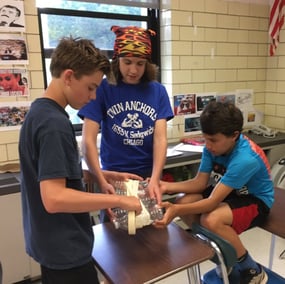
Early entrepreneurship education helps middle school students strengthen their natural skills, develop new ones, and have fun in the process. It’s so much more than learning about business and startups. This is about critical skill development that benefits all students, like collaboration, resilience, agility, problem solving.
“Students are so much more in tune with the world than we give them credit for,” Denise shares. It just takes a dedicated teacher to notice what a student has to offer and to bring that natural creativity and innovation out in them. By encouraging students to observe the world around them and identify problems to be solved, teachers can empower them with the mindset and skills to solve those problems—and pave the way toward greater student engagement, too.
Learner-Driven Experiences
So much of school these days is about compliance. Teachers and students are under pressure to perform on standardized assessments, and great emphasis is placed on grades and test scores. But in early entrepreneurship courses, students drive their own learning.
“I try to take the backseat and let my students be in the driver’s seat,” says Denise. "I want them to be leading the class.” This idea would seem counterintuitive in a traditional classroom setting, but each year, more and more teachers discover the positive impact of letting students guide their experiences. “Students are self-driven,” says Melodi. “And that’s exciting as a teacher. They just need the right framework and tools to put their ideas into action.”
In Melodi’s mxINCedu class, a student was recently tasked with creating a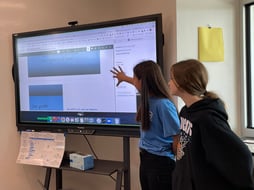 poster when he said, “You know what? I’m really good at this.” Now, he wants to explore graphic design in high school. At the same time, another student participated in a lesson that involved accounting. While working on a spreadsheet, they realized, “Nope, this isn’t for me.” Early entrepreneurship education isn’t just about entrepreneurship. It introduces students to the wide range of career opportunities available to them in their future—many of which don’t even exist yet.
poster when he said, “You know what? I’m really good at this.” Now, he wants to explore graphic design in high school. At the same time, another student participated in a lesson that involved accounting. While working on a spreadsheet, they realized, “Nope, this isn’t for me.” Early entrepreneurship education isn’t just about entrepreneurship. It introduces students to the wide range of career opportunities available to them in their future—many of which don’t even exist yet.
Student-Led Career Exploration
Considering how many options today’s students have in front of them, it can be hard for middle schoolers to answer the question, “What do you want to be when you grow up?” At this age, students are mostly driven by passion and interest, which is why it’s so important to encourage career exploration early on. The more organic it feels, the longer students will stick with it.
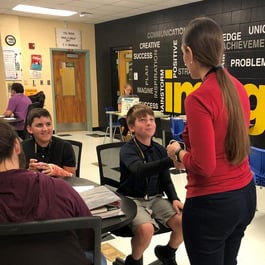 “As much as I’d love for my middle school students to own a business or start a company, we know they might have other interests, so I really try to stress that it’s about what’s interesting to them and what they’re passionate about,” says Denise. With mxINCedu, students have the agency to uncover problems that are relevant and meaningful to them, and to explore different roles within entrepreneurship to develop a solution to that problem, and to test it in the marketplace. Throughout the program, middle schoolers explore a range of responsibilities to uncover what it is they might want to do one day, and develop core skills and competencies along the way.
“As much as I’d love for my middle school students to own a business or start a company, we know they might have other interests, so I really try to stress that it’s about what’s interesting to them and what they’re passionate about,” says Denise. With mxINCedu, students have the agency to uncover problems that are relevant and meaningful to them, and to explore different roles within entrepreneurship to develop a solution to that problem, and to test it in the marketplace. Throughout the program, middle schoolers explore a range of responsibilities to uncover what it is they might want to do one day, and develop core skills and competencies along the way.
Core Skill Development
Early entrepreneurship education engages core skill development like collaboration, problem solving, confidence, and teamwork—skills that apply beyond the four walls of a classroom. And with instant gratification constantly vying for their attention, middle schoolers need to learn to see the bigger picture and begin working toward long-term goals, now more than ever.
“Students are not getting these skills in any other class,” says Melodi. This isn’t about ‘sit and get’ in order to regurgitate information for a test, what they learn through entrepreneurship is even more valuable. Melodi and Denise agree: “We’re not in it for the scores. Entrepreneurship skills can take kids anywhere.”
“We're not in it for the scores. Entrepreneurship skills can take kids anywhere.”
~ Melodi Kunn, Dieterich Middle School Teacher, Midlothian ISD
Accessible to All Learners
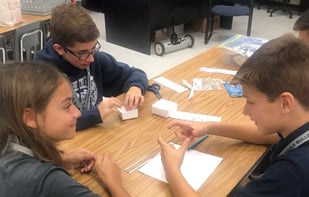 When it comes to student outcomes, creating an equitable and accessible learning environment for students is paramount. But making sure that every student in every class develops the skills they need to succeed is easier said than done. Luckily, middle school entrepreneurship provides a time and space where students don’t have to excel in the core subjects in order to excel on their team. “There’s always a place for everybody here,” says Melodi, "...and with middle schoolers, that sense of belonging is crucial to getting and keeping them engaged, and that self-empowerment, and the ‘I can do this’ look on their faces fuels me as an educator."
When it comes to student outcomes, creating an equitable and accessible learning environment for students is paramount. But making sure that every student in every class develops the skills they need to succeed is easier said than done. Luckily, middle school entrepreneurship provides a time and space where students don’t have to excel in the core subjects in order to excel on their team. “There’s always a place for everybody here,” says Melodi, "...and with middle schoolers, that sense of belonging is crucial to getting and keeping them engaged, and that self-empowerment, and the ‘I can do this’ look on their faces fuels me as an educator."
Deeper Connections & Student Engagement
We all know that middle school can be an awkward and tender time. To see students thrive, educators must create a classroom environment that encourages open sharing and feedback. But anyone who’s worked with middle schoolers knows getting them to open up takes work.
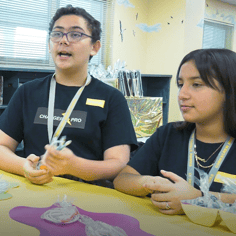 Just like adjusting to online learning, returning to the classroom presents a new set of challenges to both teachers and students, and it may take some time before middle schoolers are ready to open up again in person. We know that deeper student connections lead to deeper student engagement and learning, so how can we inspire those connections? How can we motivate middle schoolers to collaborate, express their opinions, and communicate with others?
Just like adjusting to online learning, returning to the classroom presents a new set of challenges to both teachers and students, and it may take some time before middle schoolers are ready to open up again in person. We know that deeper student connections lead to deeper student engagement and learning, so how can we inspire those connections? How can we motivate middle schoolers to collaborate, express their opinions, and communicate with others?
Melodi’s approach is the Talking Ball Exercise. At the start of every mxINCedu class, she spends ten minutes passing around a “talking ball” with the students in her classroom. Everyone is required to take a turn and share something. “I realize this is a lot of time to give up in a class period, but it is crucial,” she says. “As we progress through the mxINCedu program, there are multiple opportunities for students and teams to disagree. If we have already established a safe and welcoming community, then the disagreements are more constructive than critical.”
When students are encouraged to share openly—and feel heard when they speak up—they’re more likely to stay engaged in the task at hand. Low-risk tasks like the Talking Ball exercise kids give kids a safe place to practice communicating. This practice is crucial before beginning activities like brainstorming potential business ideas, in which students will be giving and receiving constructive feedback- a critical skill that will benefit these middle schoolers for a lifetime.
How Teaching Entrepreneurship in Middle School Benefits Teachers
Throughout the pandemic and beyond, teachers have proven their ability to think on the fly, to adapt, adjust, and move forward—the same skills they help students uncover through early entrepreneurship. While student growth and engagement are always an educator's first priority, if we want our students to be at their best, then our teachers need to be fulfilled and deeply engaged, too. Teaching entrepreneurship in middle school brings teachers fulfillment through:
-
Student/Teacher Relationships
—Because mxINCedu is driven by things like teamwork, communication, and student-interests, rather than by worksheets and textbooks, teachers and students can often develop deeper bonds with one another than they might in a traditional classroom setting. “mxINC has really re-energized my passion for teaching because it challenges me,” says Denise.
“Every group of students brings fresh perspectives into the mix (no pun intended), so it always feels new and exciting. It’s why I wake up in the morning, and it’s what makes all those little daily challenges worth it.”
~ Denise Andrews
-
Curriculum that Inspires Learning for Students and Teachers
.jpg?width=306&name=img_4094_720%20(2).jpg) —Many educators have lost their passion for the career they once loved. But with this entrepreneurship curriculum, teachers get the opportunity to learn alongside their students and bring fun back into the classroom. And the ongoing training and support from a passionate professional learning community (PLC) gives teachers the confidence to pivot and adjust as needed.
—Many educators have lost their passion for the career they once loved. But with this entrepreneurship curriculum, teachers get the opportunity to learn alongside their students and bring fun back into the classroom. And the ongoing training and support from a passionate professional learning community (PLC) gives teachers the confidence to pivot and adjust as needed.
“For me, it’s always something new—and I like that. I don’t like to be stagnant,” says Melodi.
~ Melodi Kunn
-
Material That Transcends Entrepreneurship
— True learning isn’t memorizing facts, figures, or special dates. True learning extends beyond the classroom, and the best curriculum extends beyond just one subject. “mxINCedu has completely transformed the scope of education as we know it,” says Denise. Skills like problem-solving, collaborating, and learning from failure are transferable to every classroom in every school—not to mention the world outside the schoolyard."
“It’s flexible, dynamic, and inclusive.”
~ Denise Andrews
Ready to Reignite?
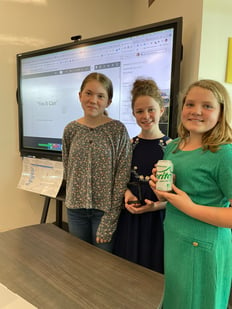 Enacting change is easier said than done—but we’re pretty big believers in the power of teaching entrepreneurship in middle school.
Enacting change is easier said than done—but we’re pretty big believers in the power of teaching entrepreneurship in middle school.
“A lot of times, middle school students can’t even spell entrepreneurship,” says Denise. “They don’t know what that is. So we define it together, and they drive it forward.” She adds, “I’ve seen students’ confidence grow. I’ve seen them gain empathy and an appreciation for others. Taking risks and challenging themselves to think outside the box brings the class closer together.”
But more than just bringing classmates and teachers together—more than teaching middle schoolers transferable, life-long skills and giving them the freedom to have a say in their own learning—teaching entrepreneurship in middle school re-ignites teachers’ love of education. Melodi describes it best when she says, “This class brings me joy.”

